Resistivity
Type of resources
Topics
Keywords
Contact for the resource
Provided by
Years
Formats
Representation types
Update frequencies
Scale
-

The use of synthetic samples for rock physics experiments in the lab is a common practice for reservoir characterization and reservoir studies. This dataset gather ultrasonic P- and S-wave velocities and attenuations, electrical resistivity, axial and radial strains, permeability and mineralogical composition, of two synthetic and two natural sandstones, measured at variable realistic reservoir conditions of stress. The data were collected during an original study which aimed to assess the extent to which the measured properties between synthetic and natural sandstones are comparable. The work was accepted for publication in Geophysical Prospecting on the 01/10/2018, which can be accessed following the link: https://doi.org/10.1111/1365-2478.12699 Falcon-Suarez, I.H., Amalokwu, K., Robert, K., North, L., Best, A.I., Delgado-Martin, J., Callow, B., Sahoo, S.K. (accepted). Comparison of stress dependent geophysical, hydraulic and mechanical properties of synthetic and natural sandstones for reservoir characterisation and monitoring studies. Geophysical Prospecting
-

These files contain Electric Resistivity Ground Imaging (ERGI) data measured using a Tigre 128 electric resistivity system with 64 electrodes in a roll-along survey mode. The electrodes were spaced 5 m apart and used in a Wenner a array configuration. The format of the file names is as follows: The two digits following B (18 or 20) is a label indicating the measurement site The digit following the T (1, 2 or 3) is the measurement transect number The next six digits, following the underscore, are the measurement date (ddmmyy) The next two digits, following the second underscore, are the survey number (measurements were repeated multiple times) The files are in tab delimited ascii text format, with three columns of data: Column 1 contains the distance measured across the survey transect Column 2 contains the a-spacing (the distance between adjacent electrode pairs) in m Column 3 contains the measured apparent resistivity value in Ohm m
-
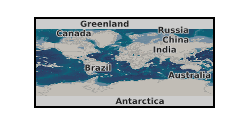
Here we present the dataset collected during a CO2 flow-through test using a synthetic sandstone of high porosity and permeability, originally saturated with high salinity brine, performed under realistic shallow reservoir conditions stress. During the test, we collect geophysical data (elastic and electrical properties) which record petrophysical variations in the rock related to the precipitation of salt, induced by a continuous CO2 flow through the sample.
-
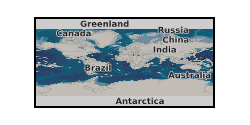
This dataset contains VASP runs performed on ARCHER to calculate the electrical and thermal conductivities of pure iron and iron alloys at Earth's core conditions using density functional theory with the Kubo-Greenwood formulation. Data are available for both the solid and the liquid phase characterising the inner and outer core respectively. Also included in the dataset the runs for computing the lattice contribution to the electrical resistivity of magnetic bcc iron at ambient pressure and two low temperatures and for computing the melting curve of fcc nickel. These data were also used for the modelling of the geodynamo and the thermal history of the Earth, to calculate the transport properties for silicon-oxygen-iron mixtures and to confirm the saturation of electrical resistivity of solid iron at Earth’s core conditions. The results from this dataset showed that both conductivities are much larger than previously thought with important implications for the geodynamo and the thermal history of the Earth, benefitting the geodynamo community. The results of our research have been recently confirmed by new experimental results obtained at Earth's core conditions. Further details can be found in Alfè et al. (2012); Pozzo et al. (2012, 2013a, 2013b, 2014, 2016); Gubbins et al. (2015); Davies et al. (2015). NERC Grant is NE/H02462X/1.
-
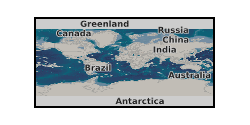
This dataset gathers the data collected during a brine:CO2 flow-through experiments conducted on three sandstones with similar mineralogical compositions (major minerals) but different porosity, clay-size fraction and clay mineralogy. The aim was to study the effect of such heterogeneities on interpretation of geophysical data. Geophysical and transport data were collected before, during and after exposing each sample to CO2, and analysed with basic petrophysical properties. The tests were conducted in the high-pressure, room-temperature (20°C) experimental setup for multi-flow-through tests in the Rock Physics Laboratory at the National Oceanography Centre, Southampton (NOCS), during 2022, as part of the OASIS, EHMPRES and FOCUS projects with funding from the Research Council of Norway (RCN grant no. 280472 - OASIS) and the Natural Environment Research Council (NERC grants NE/X003248/1 - FAPESP-EHMPRES, and NE/X006271/1 - FOCUS). To simulate the specific effective stress conditions of the target CO2 storage reservoir in Aurora (Aker et al., 2021), northern North Sea, the confining and pore pressure conditions of the reservoir were accommodated to our lab temperature conditions. We measured ultrasonic P- and S-wave velocities and attenuations, axial strains and electrical resistivity for an increasing CO2 saturation. The degree of brine saturation was inferred from the electrical resistivity using the modified Archie’s empirical relationship to account for the contribution of clay minerals, based on the Waxman–Smits–Juhasz model (see further details in, e.g., Falcon-Suarez et al. (2021)). We refer to Falcon-Suarez et al. (2020) for further information about the experimental rig and the CO2 injection protocol.
-

The spreadsheet gathers the data collected during an experiment conducted on a Utsira Sand formation core sample to complements and constrains existing geophysical monitoring surveys at Sleipner and, more generally, improves the understanding of shallow weakly-cemented sand reservoirs. The tests were conducted in the rock physics laboratory at the National Oceanography Centre, Southampton, during 2016, as part of the DiSECCS project with funding from the United Kingdom’s Engineering and Physical Sciences Research Council (EPSRC grant EP/K035878/1) and the Natural Environment Research Council (NERC). The experiment was a steady state brine-CO2 flow-through test to simultaneously evaluate ultrasonic waves, electrical resistivity (converted into pore fluid distribution) and mechanical indicators during CO2 geosequestration in shallow weakly-cemented reservoirs. The confining and pore pressure conditions were similar to those estimated for Sleipner (North Sea – like storage reservoirs), but simulating inflation/depletion cyclic scenarios for increasing brine:CO2 fractional flow rates. The data include primary ultrasonic wave velocities and attenuation factors, axial and radial strains, and electrical resistivity. Also, we provide a velocity-saturation relationship of practical importance to CO2 plume monitoring, obtained from the inversion of ultrasonic velocity and attenuation data and extrapolation of results to field-scale seismic-frequencies using a new rock physics theory. The dataset is linked to this publication: http://www.sciencedirect.com/science/article/pii/S1750583617306370.
-
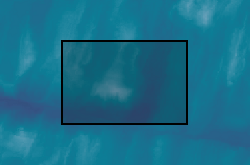
Physical properties of four serpentinite and four gabbro samples acquired respectively at the Southern Wall (IODP leg 357) and at the Central Dome (IODP leg 304-305) of the Atlantis Massif have been measured and analysed in the frame of a NERC UK-IODP moratorium research. The physical property measurements included simultaneous ultra-sonic wave velocities (compressional and shear wave velocities), attenuation, electrical resistivity and permeability under increasing and decreasing effective pressure ranging between 5 and 45 Mpa. Measurements were carried out using the experimental physical property measurement rig of the rock Physics laboratory of the National Oceanography Centre, Southampton, UK. The porosity and the density of the samples were estimated using their wet dry weight difference and the volume of the samples, under atmospheric pressure and room temperature. The aim of this research project was to learn about the physical properties of oceanic lower crustal and upper-mantle rocks and to find a geophysical method that would allow to distinguish between these rocks, remotely. The dataset has been acquired and interpreted by a science party including researchers from the University of Southampton and the National Oceanography Centre. The ultrasonic wave velocities, attenuation and the electrical resistivity for each sample and for each effective pressure (increasing from 5 to 45 with an interval of 10 MPa and decreasing from 45 to 5 with an interval of 20 MPa) are reported in this dataset. Permeability measurements could have been carried out only on 6 samples for which the permeability was high enough to be measured with the experimental rig.
-
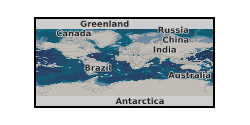
NERC grant NE/R013535/1. Here we present the dataset collected during a brine-CO2 flow-through test using a synthetic sandstone with oblique fractures, performed under realistic reservoir conditions stress. We monitored geophysical, mechanical and transport properties, for drainage and imbibition conditions, representative of the injection and post-injection stages of the CO2 storage process. We collected ultrasonic P- and S-wave velocities and their respective attenuation factors, axial and radial strains, electrical resistivity, pore pressure, temperature and brine and CO2 partial flows (from which relative permeability was later calculated).
-
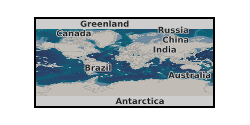
Datasets are grouped in different levels. Two main levels exist. Raw data includes processed seismic data and ERT inversion results. Seismic mass estimation relies on amplitude differences and timeshifts. ERT inversion results have been converted from VTK. • Raw *Seismic - 2009: Two datasets for Amplitude differences and Timeshifts - 2012: Two datasets for Amplitude differences and Timeshifts *ERT - 2009: One dataset with [x,y,z,Resistivity,Volume,Active] - 2012: One dataset with [x,y,z,Resistivity,Volume,Active] • Processed *Seismic - Mass_2009 - Mass_2012 * ERT - Gridded_2009 - Gridded_2012 - Seismic_ERT_Mesh_1x1 - Seismic_ERT_Mesh_1x1_CDP_Adjusted_6.25m - Seismic_ERT_Mesh_1x1_CDP_Adjusted_12.5m The dataset was created within SECURe project (Subsurface Evaluation of CCS and Unconventional Risks) - https://www.securegeoenergy.eu/. This project has received funding from the European Union’s Horizon 2020 research and innovation programme under grant agreement No 764531 (ENER/H2020/764531/SECURe).
-

EPSRC project EP/K035878/1 - Report summarising scientific findings from Work Packages 1 to 4 of the DiSECCS project. These include advanced seismic methods for assessing pressure changes and fluid flow processes in a reservoir rock, experimental rock physics and public perceptions for CCS and analogue activities.
 BGS Data Catalogue
BGS Data Catalogue